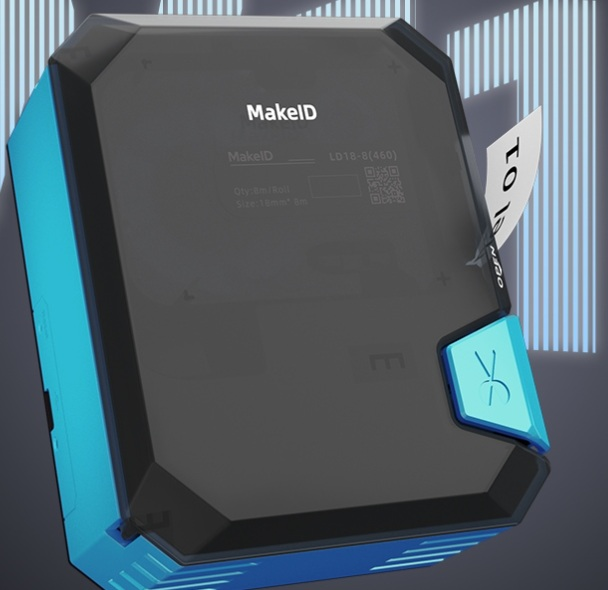In laboratory environments—where precision, safety, and compliance define success—labeling is far more than a routine task. It is the backbone of traceable, error-free workflows, from sample tracking to hazardous chemical management. While manual labeling once dominated labs, label printers have emerged as game-changers, addressing the limitations of handwritten labels (e.g., illegibility, inconsistency) and amplifying the value of proper labeling. Below’s how labeling protects lab operations, and why label printers are indispensable to this process.
1. Label Printers Eliminate Errors Caused by Manual Labeling
Manual labeling is a major source of lab mistakes: smudged ink, misspelled chemical names, or faded text can lead to catastrophic mix-ups—like confusing a toxic reagent with a harmless buffer, or misidentifying a patient’s blood sample. Label printers solve this by ensuring consistency and legibility at scale.
Modern lab-grade label printers use durable, smudge-proof inks and thermal printing technology, producing labels that remain readable even in harsh lab conditions (e.g., cold freezers, chemical fumes). They also integrate with lab software (e.g., LIMS, Laboratory Information Management Systems), auto-populating critical data (sample IDs, expiration dates, hazard symbols) directly from digital records. This eliminates human error from manual transcription—for example, a label printer can instantly generate a label for “Sodium Hydroxide (Corrosive)” with a pre-loaded hazard icon, instead of relying on a technician to handwrite the name and symbol correctly.
2. Label Printers Ensure Compliance with Strict Regulatory Standards
Labs face rigorous regulations (OSHA’s Hazard Communication Standard, CLIA, ISO 15189) that mandate specific labeling requirements—from clear hazard statements to traceable batch numbers. Non-compliance risks fines, shutdowns, or legal liability, and manual labeling often struggles to meet these strict standards.
Label printers are designed to align with regulatory rules. They can print labels with standardized elements required by authorities: OSHA-mandated signal words (“Danger/Warning”), CLIA-compliant patient identifiers, or ISO-approved batch codes. For example, when labeling a hazardous chemical, a printer can automatically include the supplier’s contact info, hazard class, and precautionary statements—all non-negotiable for OSHA compliance. Unlike handwritten labels, which may omit or misplace critical details, label printers ensure every label meets regulatory checklists, reducing compliance risks.
3. Label Printers Boost Traceability and Workflow Efficiency
Lab work relies on traceability—the ability to track a sample, reagent, or piece of equipment from collection to analysis. Without clear, scannable labels, tracing items becomes a time-consuming, error-prone process. Label printers address this by producing labels with barcodes or QR codes, which link to digital records in LIMS.
A technician can scan a barcode from a printer-generated label with a mobile device, instantly accessing a sample’s full history (collection date, storage conditions, test results) instead of searching through paper logs. This not only speeds up workflows but also preserves data integrity—if a reagent batch fails quality control, the barcode lets labs quickly identify all samples using that reagent and recall them. For busy labs handling hundreds of samples daily, label printers turn hours of manual tracking into seconds of scanning.
4. Label Printers Withstand Lab-Specific Environmental Challenges
Lab labels must survive extreme conditions: freezers (-80°C for biological samples), autoclaves (high heat and pressure), or exposure to solvents and acids. Handwritten labels or low-quality printed labels fade, peel, or smudge in these environments, rendering them useless.
Lab-grade label printers use specialized materials—waterproof, chemical-resistant, and temperature-stable labels—that hold up in harsh settings. For example, a label printed for a freezer-stored cell sample will remain intact and readable for months, while a handwritten label would smudge or peel within weeks. This durability ensures labels stay functional throughout a sample’s lifecycle, preventing lost or misidentified items.
Conclusion
Labeling is non-negotiable for lab safety, compliance, and accuracy—and label printers are the tools that make effective labeling possible. By eliminating manual errors, ensuring regulatory adherence, boosting traceability, and withstanding lab conditions, label printers transform labeling from a tedious task into a reliable safeguard. For any lab striving to maintain high standards, investing in a quality label printer isn’t an expense—it’s a critical step toward protecting workflows, data, and personnel.

